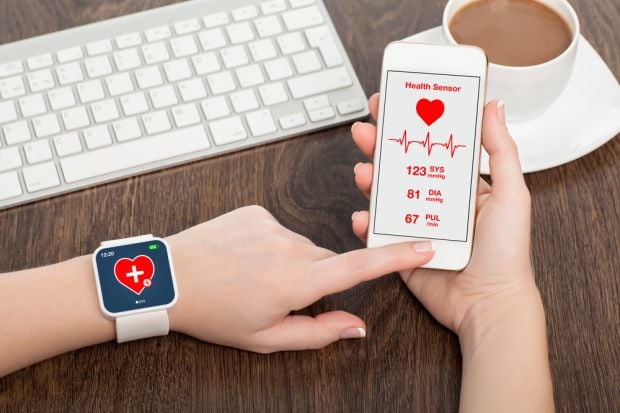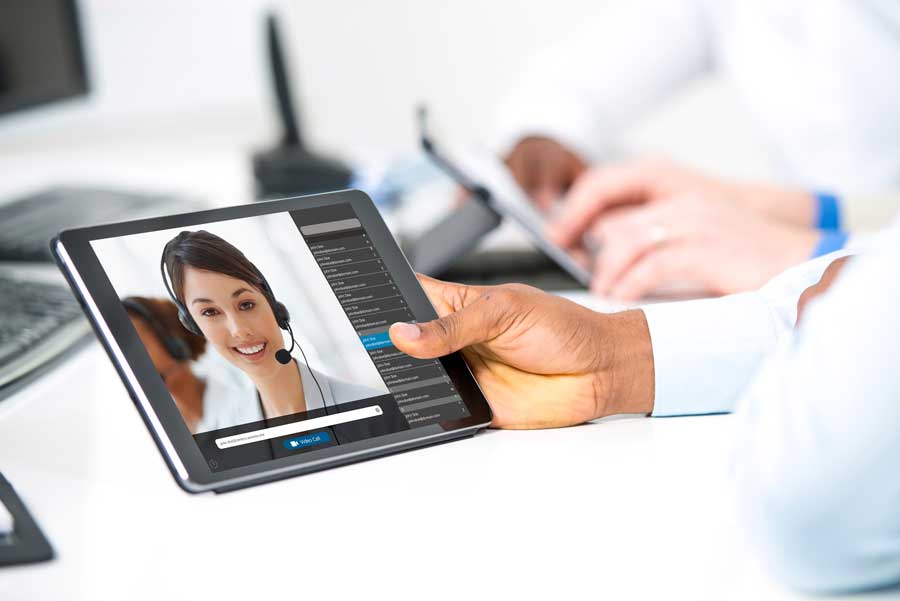The Future of Wearable Technology in Healthcare
 Rama Sreenivasan
·
4 minute read
Rama Sreenivasan
·
4 minute read
In the past five years, the Internet of Things has become more and more of a household term. We’ve seen tech become integrated into just about every part of our lives — from our bank accounts to our grocery lists to our fitness and nutrition.
The healthcare industry hasn’t been left in the dust when it comes to the Internet of Things either. Wearable technology has become increasingly popular since the emergence of this technology and has assisted in diagnosing conditions, preventative medicine, and tracking healthy recoveries.
Along with that, remote IT support has made things even more easy and enabled us to lead a better lifestyle without much of a hassle.
Wearables can keep a continuous check on the wearer’s vital signs and track their location, gain fitness-related data, carry the diagnosis, and prevent mishaps.
Healthcare, its professionals, and the patients can gain much more out of wearables with the updates in artificial intelligence and big data.

Take a look at how the healthcare industry is evolving and what are the new and upcoming trends.
Clothing
Clothing is possibly one of the most obvious places to insert wearable technology. In the past few years, we’ve seen shirts that can track heart rates, body temperatures, and sleep patterns.
In the future, consumers can expect to see clothing that can monitor glucose levels. They’ll also be able to record their ECG and more closely monitor their heart rates. This tech will also be more and more invisible.
The tech we’ve seen implemented in clothing so far has been somewhat cumbersome and bulky. Many consumers have complained that such wearable tech isn’t attractive enough.
Considering how complications in the limbs due to diabetes are becoming a major issue in society, we might soon have technology that can detect abnormalities before the condition progresses to the next stage. This data can be transferred via Bluetooth to concerning authorities.
Buttons on shirts may be able to send out signals in case of medical emergencies to medical professionals.
The tech that allows HIPAA compliant video conferencing may also be developed to ensure that the health of a patient is not compromised in any way.
Accessories
Accessories might just be the most exciting objects to include wearable tech for healthcare. The most seemingly mundane objects have become exciting thanks to this new frontier.
Buttons will be able to track your location and heartbeat. You may even be able to use them to call for help in emergencies. With the (literal) press of a button, you’ll even be able to check your glucose levels without carrying around a kit anymore.
Even earrings will lead the way in wearable healthcare technology. The baubles that dangle from your earlobes will also be able to track your location. They’ll be able to check your oxygen levels as well. Imagine making emergency phone calls straight from a pair of silver hoops.
Lightweight accessories that can connect doctors with their patients and vice versa shall come into the picture, probably with sensors that allow personalized treatment plans to be formulated immediately.
Eyewear
We’ve already seen plenty of advances when it comes to eyewear. The invention of Google glasses has allowed users to navigate their ways through the streets without looking at their phones.
Yet, do you wonder how will eyewear affect the healthcare industry when it becomes an irreplaceable part of the industry?
Your eyeglasses and contacts will be able to send your eye doctor feedback on your prescription — and possibly even assist in correcting vision problems and color blindness.
With HIPAA video conference being added to the features available in eyewear wearable technology, and a digital personal assistant will prove to be highly beneficial in terms of a medical emergency.
Eyewear for medical professionals will be able to help them in avoiding hitting any of the crucial nerves, blood vessels, and lymphatic vessels, thus making surgeries safer and effective.

Shoes
Humans are already shoe obsessed. In New York City, you can see hundreds of shoppers lining up for the latest shoes practically every day. Yet what about shoes that can help you live a healthier lifestyle?
In the future, we’re expecting to see footwear that can power your other devices — such as cell phones and heart rate monitors, and required measures can be taken in case of emergencies through remote IT support.
You’ll no longer need to wear your step tracker on your sleeve either; instead, you’ll install devices in your shoes to track your steps. You’ll also be able to track fluctuations in your weight and muscle mass directly through your shoes.
Internet of Things complements wearable technology with its innovative mechanisms by monitoring the mobility of the wearer throughout the day and providing inputs on what changes should be implemented for a better and healthier lifestyle.
Cosmetics
Some of the seemingly strangest wearable tech advancements have surfaced in the cosmetic industry. Microchips in your nail polish will be able to gauge your body temperature. New nail polish also can detect if illegal drugs have been slipped into someone’s drink — like Rohypnol.
Devices that can track the pollution levels in the air, adversely affecting the skin quality shall develop, and benefit users by providing proper skincare routine.
Real-time data related to the condition of the skin may also be tracked through a smartphone determining the risks of exposure to UV rays based on an individual’s skin tone and texture.
Imagine such technology that allowed people to check-in and out of hotels and trains with just your regular acrylic nails. Interesting and astounding, isn’t it? Something similar is being developed in London.
While we have seen huge advancements in wearable technology in healthcare over the past decade or so, new advancements prove that the best is yet to come. The wearable tech that consumers will see in the next decade is expected to extensively surpass the tech we’ve seen in the past few years.
Radically different devices are popping up in the market that keeps proving to be beneficial to outbound patients. According to research, there has been an 89% reduction in the cases of patient disorientation preventing cardiac arrest or respiratory arrest.
The ongoing trend of wearable will influence various healthcare providers, tech companies, insurers, and multiple other levels of people involved or even remotely related to the wearable tech.
With a prominent development in the aspects of wearable technology, more accurate sensors shall be invented and brought into the market that will eventually cancel out the risks related to numerous procedures that are considered tricky and are life-threatening.
It is evident that healthcare at home will become a common practice and should become a part of every person’s routine.
It is not just wearable technology that has made an impact on how we live but also remote IT support that has made things easier for both professionals and patients. Algorithms make these tasks easy to deal with and provide on the spot results, and reduce the time each healthcare professional allots to a patient, enabling them to attend to more cases, efficiently.
.png?width=120&height=55&name=Blitzz-Logo-right%20white%20eyes%20-%20not%20transparent%20(3).png)


